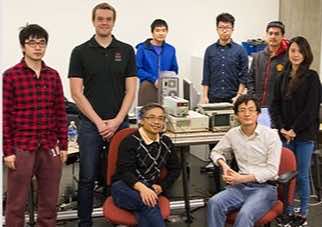Welcome to the age of technology and science where you have a myriad of gadgets at your disposal and most of them now support Wi-Fi connectivity. While all this is great and quite amazing, there is a bit of a problem in this whole scenario, can you spot it? Here, let us help you out; with an increased number of devices trying to connect to the same network simultaneously implies that the bandwidth is being reduced proportionally.
This seemingly simple issue will soon leave us frustrated in a public place where Wi-Fi bandwidth just won’t be enough for us to use Internet properly. To tackle this issue, a research team at Oregon State University has come up with a new invention; a system termed as WiFO that uses Infrared LEDs to boost Wi-Fi bandwidth by about 10 times. In other words, the system will be strengthening the existing bandwidth by allowing hybrid connections; Radio frequency along with optical data links originating from the same source.
The name WiFO is a hybrid of Free-space Optic and Wi-Fi. The prototype system that has been created employs advancements made in LED technology thus allowing for the high-frequency modulation of IR light in wireless transmission.
Thinh Nguyen, Associate Professor of Electrical and Computer Engineering at Oregon State and also the Lead researcher for this project said, “Using light to transmit signals is an old technology that dates back when the Roman soldiers communicated with each other using a simple flash code with mirrors.”
By making use of components that are low-cost and off-the-shelf, the prototype from Oregon State is capable of dataspeeds upto 100 Mbps. However, the LED component can only carry out transmission within 1 meter radius. In order to tackle this limitation, the system autonomously makes switches between a number of LED transmitters (affixed to a ceiling or other high points) and the already existing Wi-Fi RF thus imparting a seamless coverage of a particular area.
The original idea for this system sprang up during discussions between associate professor Nguyen and Alan Wang – university co-worker and assistant professor of electrical and computer engineering at Oregon State. Both colleagues then went on further to collaborate on the project and designated the task of coming up with a prototype to graduate students. The results were there within 8 months with students coming up with a prototype that proved the concept. The team has already received a provisional patent for their creation. Currently, Associate Professor Nguyen is looking for a company to work with him and the team to develop the device further and eventually bring it to the market. He is hopeful and says, “I wanted all of my student to contribute to this project, because I think it’s going to be big.”


